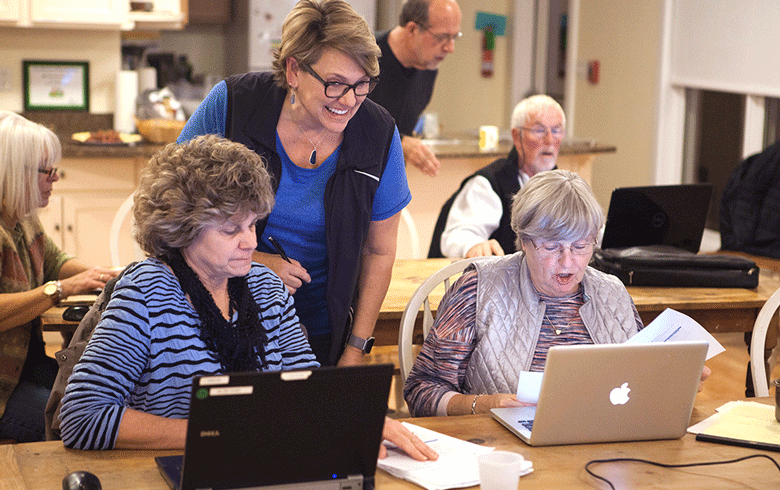The pandemic clarified what many already knew—your ability to connect to the internet is not guaranteed. Where you live determines the quality of the infrastructure you can access. Your ability to use that connection depends on whether you can afford internet service, if you have a device to use, and your skill in using the device.
Your internet connection is intensely personal. A good connection allows you to video chat with family and friends or share pictures of your kids. You might use the internet to look up something health related—whether it’s for you, a parent, a child, or a friend. Maybe you do some of your banking online. As school, work, and life happen more online, your internet connection is your access to the digital economy.
Most internet access comes from a service provider and is delivered through privately owned infrastructure. Companies build broadband infrastructure where it makes economic sense, where they can see some sort of economic return on the capital they invest.
Companies build broadband infrastructure where they can see some sort of economic return…
Rural areas are often less profitable because they have fewer potential customers. Communities or neighborhoods with low average incomes are more likely to be skipped by companies. Poorer, more rural communities struggle even more to attract private investment. In addition, years of digital redlining means many communities are still stuck with antiquated, inadequate infrastructure.
Public subsidies can help improve internet infrastructure. If a company can reduce its capital needs through a grant, it can see a higher return on its capital investments. A 25 percent to 50 percent public subsidy can close the gap for many projects.
In the same way that a private company needs to see a return, taxpayers need to know they are getting a good return when they pay for part of a project. The public return doesn’t come when the infrastructure is built, it comes when people use it.
Equitable access to the internet is not just an infrastructure problem. It also exists where people aren’t able make full use of the internet, even if they have world-class infrastructure.
Through 3,234 one-on-one tutoring sessions to novice computer users, the National Digital Equity Center reaches some of Maine’s most vulnerable citizens and helps them join the digital economy. Of these students:
• 41 percent have an educational level of high school or less.
• 48 percent have a family median income of $34,999 or less.
• 59 percent are between 21 and 64—working age adults.
• 59 percent are 55 years old and older, including 27 percent who are 70 and older.
• 75 percent are female.
Broadband adoption rates reported in the American Community Survey tell an important part of the story. This data provides insight into how many people in an area have internet in their homes.
Layering in data sets such as median income and educational attainment as well as broadband speeds and information about digital inclusion work helps paint a picture of the potential return on public investments. This information can help provide a data-driven reason to support that community in broadband planning or increase digital inclusion efforts like programs that help provide affordable broadband, affordable equipment, digital literacy training, and public computer access. Intentionally seeking out vulnerable communities and serving them with suitable programming helps make the internet more useful.
Beyond looking at the data, closing the digital divide also requires making connections between those in the broadband sector and those working on adjacent issues. For example, when the pandemic happened, some of the displaced workers training at career centers took free digital skills classes and received a certificate that counted as one of their job searches. Over 500 unemployed people went through this program. This kind of work could be further leveraged through packaging the trainings with a skills assessment and creating individual learning plans to help the individuals get the right skills for the jobs they are seeking.
Not everyone in Maine has the same opportunity to participate in today’s economy. Let’s work together using data and partnerships to close the digital divide.
Susan Corbett is founder and executive director of the National Digital Equity Center. Nick Battista (nbattista@islandinstitute.org) is senior policy officer at the Island Institute, publisher of The Working Waterfront. Both serve on the ConnectMaine Authority Board.





